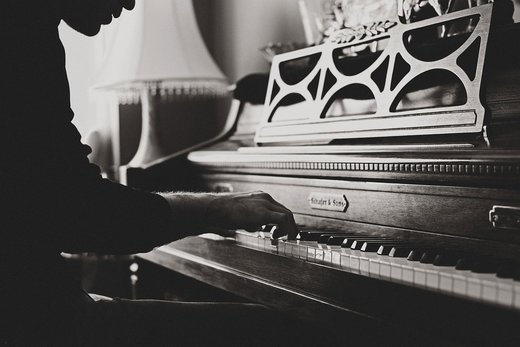|
Studying classical piano technique has been shown to increase competence in nearly all forms of music. Classical piano is the style most beginners learn—there are an abundance of instructors able to teach it, and it enjoys a high level of prestige as the music created by master composers like Mozart, Beethoven, and Chopin. Although classical piano music differs from contemporary piano, a good pianist will not only have an appreciation for both, they will actively work to understand the nuances of each musical style. Appreciating the two styles—as well as their corresponding methods of instruction—allows musicians to have a broader repertoire when it comes to playing the piano and also will give them a wider range of opportunities in the future. Contemporary vs Classical Piano Instruction Contemporary piano instruction typically focuses on teaching chords, which are sets of three (or sometimes two) notes on the keyboard that produce a specific sound when played together. Pop, jazz, and rock songs are often structured around sets of chords—they are the building blocks of contemporary music. This focus on chords is the main area where contemporary piano technique differs from classical piano. Students instructed in the classical style typically focus on learning to read individual notes on sheet music. There’s more emphasis on playing music that’s been written down in the sheet music notation system, instead of playing by ear. Contemporary, chord-based instruction may involve chord charts, which resemble diagrams of the keyboard with indications where to place the fingers to produce specific chords. For absolute beginners, this kind of notation is more intuitive and easier to understand than classical sheet music, which uses a more complex set of symbols. In chord-based instruction, students learn progressions of a chord that start with a certain key and move up the scale. For example, a chord progression in the key of F starts at the F key and proceeds to higher notes, producing different tones in the same key. The contemporary chord-based approach to piano lessons is often described as less formal than classical piano instruction. Learning chords instead of deciphering sheet music encourages improvisation, and may lead to a better understanding of broader concepts like rhythm and tone. Chord-based instruction also helps pianists learn to play by ear and compose their own pieces, since they can hear a sound and immediately reproduce it on their instrument. Contemporary piano instruction may also provide better preparation for playing in bands and ensembles. In addition, some classical piano teachers may focus too heavily on rote memorization of pieces, though this isn’t an inherent part of the classical technique. But this approach can bore students and discourage them from proceeding in their studies. On the other hand, classical piano technique can’t be matched when it comes to teaching agility and speed and enabling students to play complex pieces. Those trained in classical technique essentially have mastered a second language, because they can read sheet music. And if you’ve ever seen a classical pianist perform, you know that it can be truly amazing to watch their fingers fly across the keyboard in different directions at top speed. Transitioning between the Two StylesIf you began your studies of the piano focusing only on classical technique, you may wish to learn more about contemporary piano—or vice versa. One of the easiest ways to switch from classical to contemporary piano is to learn chord progressions, so you can experiment and improvise with the sounds. Hanon exercises are a great way to practice chord progressions when switching from classical to contemporary piano. One of the best resources available is the Hanon to Jazz book. This instructional guide was written with classically trained players in mind and is full of exercises that help the musician become more comfortable playing contemporary music. Even just doing a quick Internet search of common jazz chord progressions can help any musician understand jazz theory concepts. Studying common patterns in jazz is similar to learning a new language, and the more the musician studies, the deeper their understanding will be. Additionally, studying contemporary songs is a good way to understand chords and how they provide structure to pop songs. TranscribingAnother way to get acquainted with the structure and form of contemporary music is by transcribing. The idea is to have the musician pay attention to the sounds that they hear on certain recordings. As the musician listens, they write down observations and note where they hear bars that are easy to distinguish. Participating in this type of exercise will help the musician figure out the correct tones and rhythms, and may even help them compose their own pieces in the future.
Regardless of the style of music, it’s important to appreciate what each has to offer. In addition, if one style of music inspires passion and the other does not, it’s often better to go with what feels more natural for the musician. And of course, there’s no rule that says a musician with a background in contemporary piano can only play contemporary music, or that classically trained pianists can only play music written before 1850. Explore different styles of music, and play what speaks to you. Comments are closed.
|
Photo used under Creative Commons from Marina K Caprara
 RSS Feed
RSS Feed
